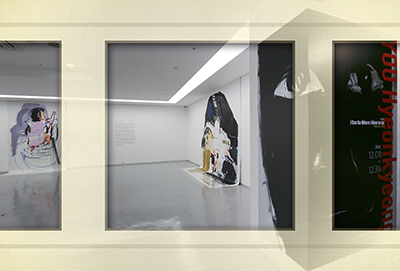//작가 노트//
이탈리아 영화감독 루키노 비스콘티(Luchino Visconti)의 ‘베니스에서의 죽음’을 좋아했다. 도입부의 바다와 함께 흐르는 구스타브 말러의 교향곡 제5번 4악장을 오랜 시간 들었다. 잔잔한 흐름이 필요할 때 잠시 꺼내보는 장면들이 몇 개 있는데 쉽게 다른 여정으로 환기된다.

이 영화는 환기가 필요할 때 찾았기 때문에 몽롱한 휴식과 함께 보았다. 사운드에 눈을 뜨면 베니스의 좁은 길들과 오르내리는 높지 않은 계단들, 미로형 담들과 만나게 되는데 다시 잠들어 분절된 내용과 풍광만 느껴도 무관하다.
삽입된 음악과 대사들은 대체로 내러티브와는 무관한 연출자의 삶에 대한 통찰 같기도 해서 자연스레 그 줄거리를 놓아버리게 된다.
인간의 존엄성, 예술, 자유, 이 세 가지를 말하는 대목을 이해하지 못하고 오래 담아 두었다. 그것이 겉이라 하여도 인간의 존엄성과 예술에 대해서는 생각해 볼 수 있을 것 같기도 하였지만 자유라는 것은 흡사 열망한 것처럼 보이긴 하여도 그 경험도 없을뿐더러 어떻게 느낄 수 있는 것인지 지각하지 못했다.
혼자 지내는 것은 본질은 아니어도 그에 가까워지게 했다. 그 시간이 길어질수록 온전히 나의 몸과 호흡해 운용하는 시간이 늘었고 그것이 처음 경험한 자유라고 느낀다.
‘I Can Go Where I Want to Go’
I liked “Death in Venice” by Italian film director Luchino Visconti. I listened for a long time to Gustav Mahler’s Symphony No. 5 4th movement, which flows with the sea in the intro. There are a few scenes that I take out for a while when a calm flow is needed, and it is easily recalled to another journey.
I watched this movie with a hazy break because I found it when I needed ventilation. When we open our eyes to the sound, we will see the narrow streets of Venice, the stairs that go up and down, and the maze-like walls.
The inserted music and lines seem to give insight into the life of the director, which is largely unrelated to the narrative, so naturally the storyline is let go.
I remember the monologue in the movie, it looks like the main subject of the maker. Human dignity, art, and freedom, these three, were kept for a long time without understanding. It seemed to be able to contemplate the dignity and art of human beings even on the surface. But I had no experience and could not perceive the freedom, although it seemed to be yearning for.
Living alone was not essential, but it made me closer to freedom. The longer the time, the more time I had to fully breathe and operate my body, and I feel that it was the first freedom I experienced.//You Hyeon Kyeong//
장소 : 갤러리 양산
일시 : 2021. 12. 01 – 12. 31.
추PD의 아틀리에 / www.artv.kr / charmbit@gmail.com